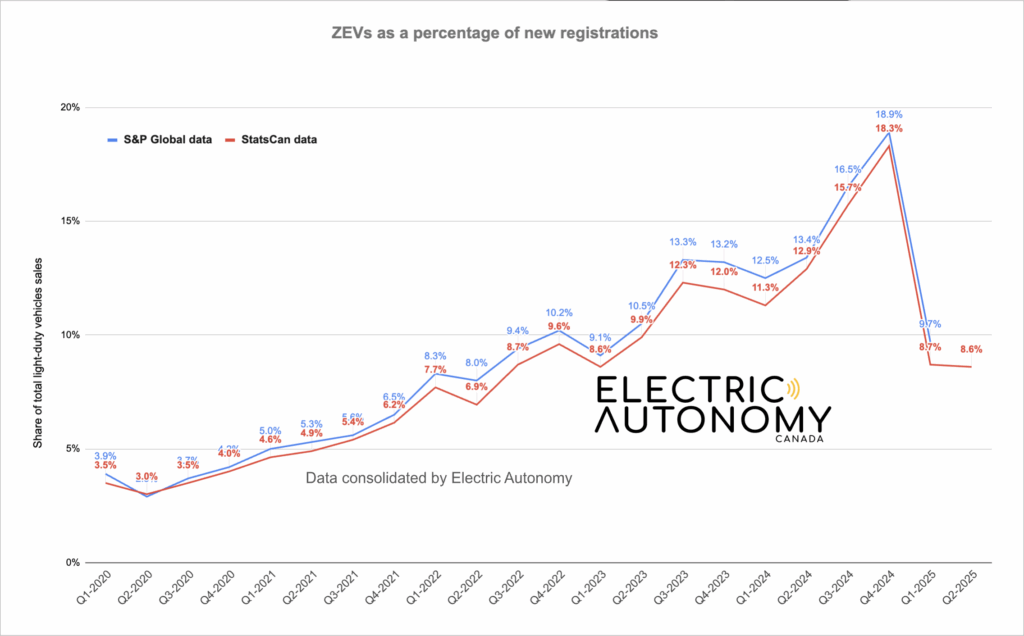Zero-emission vehicles accounted for 8.6 per cent of new vehicle registrations in Q2 2025 according to new data released by StatsCan

Canada’s ZEV adoption rate dropped to 8.6 per cent in Q2 2025, according to Statistics Canada data. Image: Electric Autonomy
Zero-emission vehicles accounted for 8.6 per cent of new vehicle registrations in Q2 2025 according to new data released by StatsCan
The first half of 2025 has seen zero-emission vehicle sales in Canada drop significantly compared to late 2024.
Statistics Canada (StatsCan) released its Q2 2025 data today showing that zero-emission vehicles (ZEVs) made up 8.6 per cent of new vehicle registrations — a marginal 0.1 per cent decline from Q1 2025.
On a unit-by-unit basis, 46,366 new ZEVs were registered in Canada between April and June 2025. The year-to-date total now stands at 83,595.

(Note: StatsCan classifies BEVs and PHEVs as “zero-emission vehicles.” This grouping does not reflect Electric Autonomy’s policy, which considers only non-combustion engine vehicles as zero-emission. However, where statistics refer to ZEVs, we have adhered to StatsCan’s definition for consistency.)
Total vehicle registrations in Canada increased by 26.9 per cent over Q1 2025.
“Despite concerns over automobile tariffs, the second quarter of 2025 marked the highest number of new quarterly registrations since the start of the COVID-19 pandemic,” the StatsCan report notes.
So far, there have been 968,430 new vehicle registrations in Canada this year.
Counting BEVs alone
There were slightly more battery-electric vehicles (BEVs) registered in Q2 than in Q1 2025.
ZEV market share fell to 5.4 per cent in Q2 2025, down from 6.2 per cent in Q1, driven by a sharp increase in total vehicle registrations across all powertrains.
Nationally, 29,502 BEVs were registered this quarter compared to 26,401 in Q1 2025.
Most of the new BEV registrations to date are in Quebec (22,964) followed by Ontario (15,981) and British Columbia (12,043).
In addition, Quebec saw an increase in BEV registrations between Q1 and Q2 — the only province to do so. (All provinces saw more PHEVs registered in the second quarter than the first.) However, nationally, electric multi-purpose, passenger cars and pickups all posted quarter-over-quarter gains in units registered.






